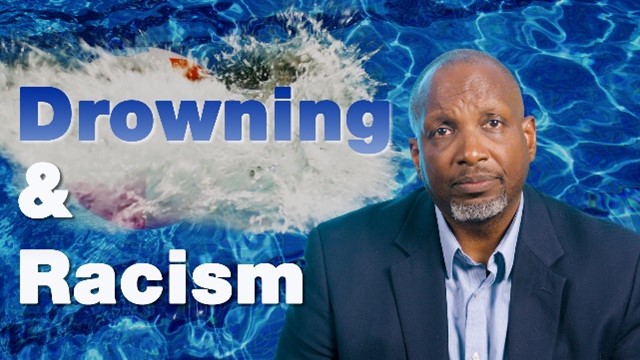ITASCA, IL -- As summer kicks off and families enjoy water activities, the American Academy of Pediatrics encourages families to plan multiple layers of protection to keep everyone safe – including swim lessons. Drowning is the single-leading cause of death among children aged 1-4, and a top cause of death among teens. But drowning is preventable. Access to swimming skills can save lives.
One study by the USA Swimming Foundation found that if parents don’t know how to swim, there’s only a 13 percent chance their children will learn to swim. Historically, in the U.S. many public pools discriminated against Black families, who were denied entry on racist grounds. Some pools closed rather than integrate. The result is generations of Black families who did not have access to pools or swimming programs, and today Black teenagers are three times more likely to drown than a white teen.
There are solutions, which AAP describes in a new video featuring Andrew Kiragu, MD, FAAP, who serves on the executive committee of the AAP Council on Injury, Violence and Poison Prevention.

AAP also offers a new video in Spanish that reviews the layers of protection to prevent drowning in open water, such as oceans, lakes and rivers.
“The solutions start at home, but pediatricians, communities and policymakers need to take action, too.,” Dr Kiragu said. “Clinics and other community organizations should present learning to swim as an important life skill — and one that can be a fun way to get exercise.”
Reducing drowning rates will require multiple solutions, Dr. Kiragu said. Communities should make building and maintaining public swimming pools a priority when developing parks and urban environments. Local leaders can ensure those pools are staffed with qualified lifeguards, so they can stay open. Communities can also design water safety programs that are accessible to everyone in the community, and that employ qualified instructors.
Individual families can add layers of protection when they are enjoying the water. That includes:
- Choose safe places to swim
- Learn to recognize hidden obstacles and rip currents
- Never go in the water after drug use or drinking alcohol
- Avoid swimming alone
- Assign a water watcher – an adult who will pay constant attention to swimmers
- Make a rule that everyone must always wear a life jacket on a boat
“We have to look at swimming as a basic life skill, like learning to read. Because it is,” Dr. Kiragu said. “Swimming is a skill that can save your life or the life of your child. It’s something everyone needs to learn.”
Additional resources:
- Drowning prevention campaign toolkit with water safety graphics, videos and other messages: www.aap.org/drowning
- HealthyChildren.org article: What is the best first sport for kids?
- HealthyChildren.org article: Swim Lessons: When to Start & What Parents Should Know
###
The American Academy of Pediatrics is an organization of 67,000 primary care pediatricians, pediatric medical subspecialists and pediatric surgical specialists dedicated to the health, safety and well-being of infants, children, adolescents and young adults. For more information, visit www.aap.org and follow us on Twitter @AmerAcadPeds